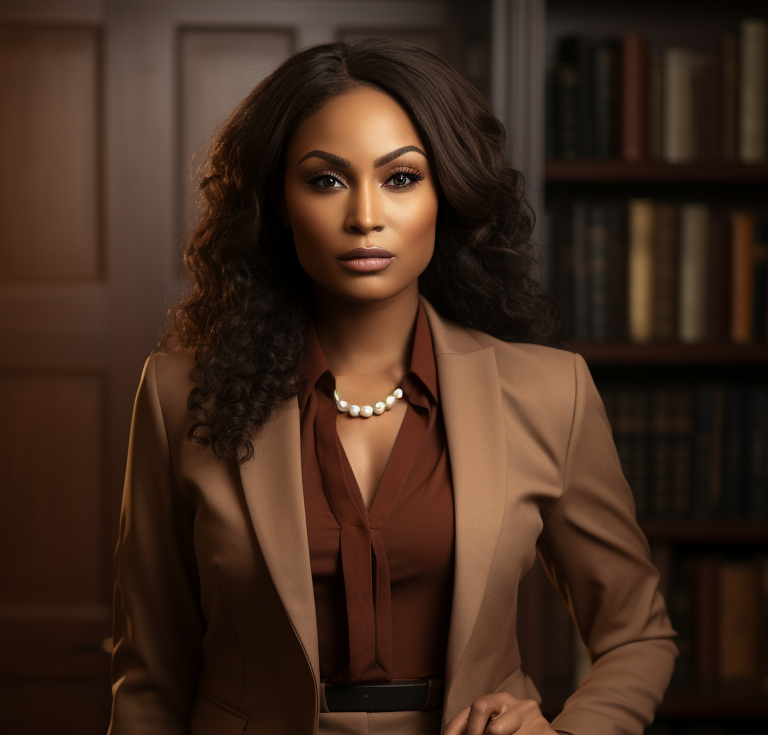The Importance of First Impressions
I thought I’d create a post on this topic since it was something that fascinated me when I first learned about it, years ago. To many of you, this all may be common knowledge, but for those who are new, it is good to understand the importance of first impressions.
When I first started doing color analyses decades ago, I received an email from a woman asking if I also talk about the psychology of image. She said “…like if you were in a room with several people and there was a fire, and the fireman could only save a few people, statistically he would grab the most attractive person first.”
Huh?
This sounded a bit weird to me. I told I just determine one’s best colors right now. But this odd statement of hers intrigued me. It set me on a path to learning all I could about the psychology of image.
I even wrote a little research paper for an assignment at my beauty school when I trained to be an esthetician. I just recently found it among some old papers and thought I would share it with you.
I've read many books on the topic of image over the years. My very first one was the classic book “Dress for Success” by John T. Molloy. It was first written in the 1970s, so much of the specific information is completely outdated, and some may consider it a bit sexist by todays standards. But the general concepts themselves I found very helpful.
Here are the most important concepts I took away from the book, and included it in my beauty school report.
First Impressions Count
The moment you walk into a room, people start forming opinions about you. (learn about the psychology behind this below.)* The book was geared toward professional people, especially those in sales. He encouraged people to think of their
clothing as a tool that can help them project confidence, reliability, and
competence right from the start. And, of course, to make more sales.
Dress for Your Audience
One of the key takeaways is to dress appropriately for the context and audience. Whether it's a job interview, a business meeting, or a casual get-together, wearing clothes that fit the occasion can significantly affect how others perceive and interact with you.
Quality Over Quantity
It's not about having a vast wardrobe but a strategic one. Investing in high-quality pieces that fit well and last longer is more effective than having a closet full of trendy, low-quality items. Quality clothing speaks volumes about your self-respect and dedication to your appearance. Note: this does not mean you have to wear Versace or Armani. It just means buy the best you can afford at any given time.
Understand the Power of Color
Of course, I love this one, since it eventually turned into my passion and a career. But the book was written before the whole explosion of color analysis hit in the 1980s! The author understood how certain colors effected people's image. Additionally he talked about color psychology of certain colors, which, too, is important depending on who your audience is.
Personal Style vs. Professional Expectations
|
The author talks about finding a balance between personal style and the expectations of the professional environment. It is possible to express your individuality while still adhering to professional standards. Like it or not, professional expectations are strong. For example, despite being a bohemian-hippy at heart, if you are a lawyer at a big law firm, they are not going to want to see your boho dress and sandals. Finding a nice balance between the personal and professional style will help you feel authentic and comfortable while still fitting in professionally. |
 Know your audience and its expectations. |
Why First
Impressions are so Important
First impressions are crucial because they can have a significant impact on subsequent judgments and interactions with people.
Numerous scientific studies have explored the importance of first impressions and have identified several factors contributing to their significance. Here are four of them:
Primacy effect: This means that we tend to rely a lot on the first information we get about someone when forming our opinion of them. Even just a few seconds can shape what we think of them later on.
Research has shown that the first few seconds of an encounter can shape subsequent perceptions, making it difficult for information learned later on to completely override the initial impression. In other words, you are going to have to work 3X harder to overcome a bad impression but if you make a good first impression, people tend to give you some leeway if you mess up later on (up to a point, of course).
Confirmation bias: Once
a first impression is formed, individuals tend to seek out information that
confirms their initial judgment. You may hear this term often when it comes to politics and to news sources. People tend to watch news programs that reinforce their already-formed opinions.
Halo effect: The halo effect occurs when a positive impression in one area influences perceptions of other unrelated traits. For example, if someone is perceived as physically attractive, they may also be seen as intelligent or kind, even if there is no evidence to support these assumptions. This effect demonstrates how first impressions can shape subsequent evaluations.

Upon seeing these two woman above, people are most likely to find the woman on the left to be more professional, capable, intelligent, and trustworthy, simply due to how she dresses and how she stands. This doesn't mean she actually is, of course, but our automatic instinctual minds will think it initially.
And even if later information contradicts the first impressions, it still takes quite some time to override them.
Bottom line: Fair or not, this is how humans operate most of the time. Become aware of it and use it to your advantage.
Return to Home page



